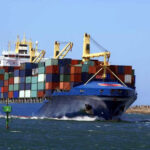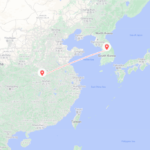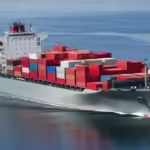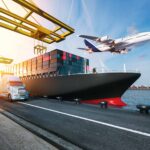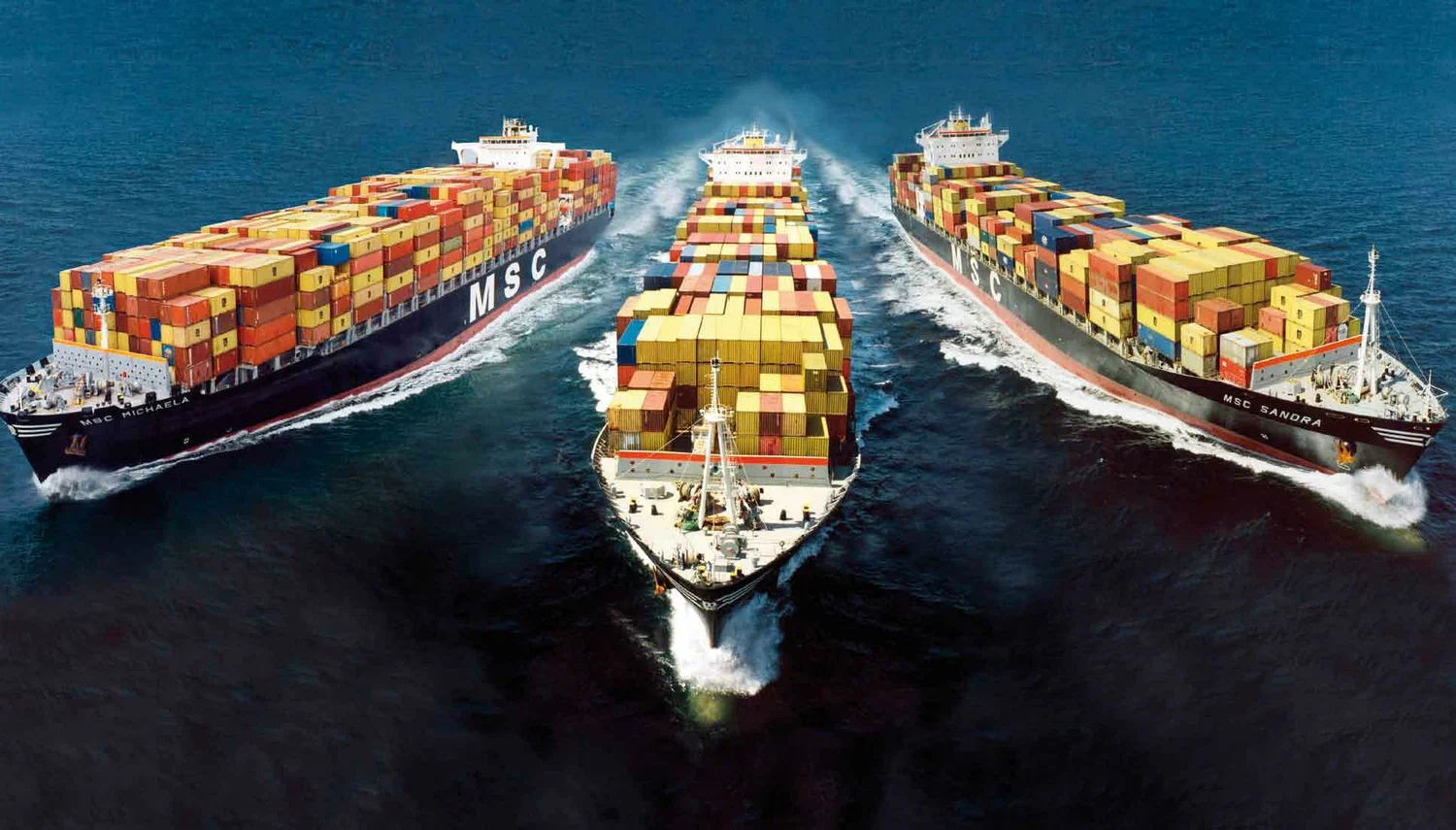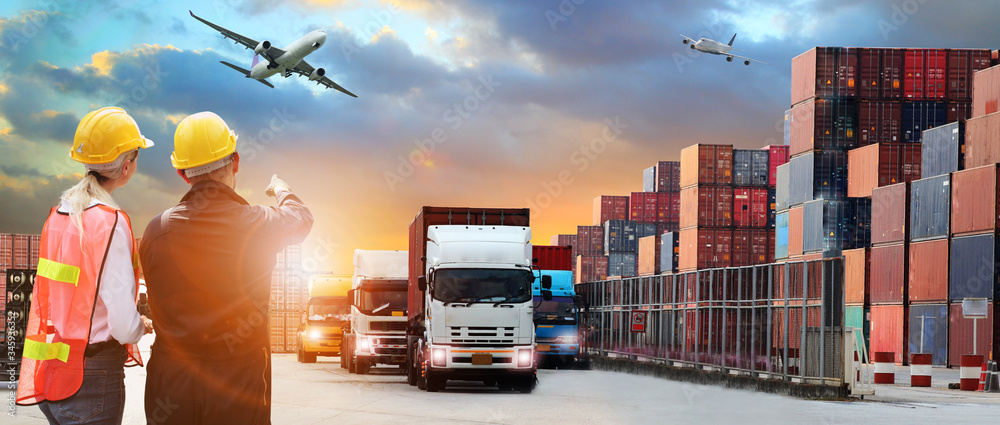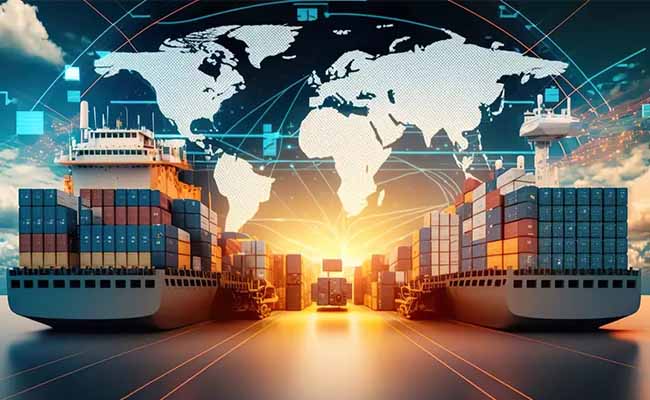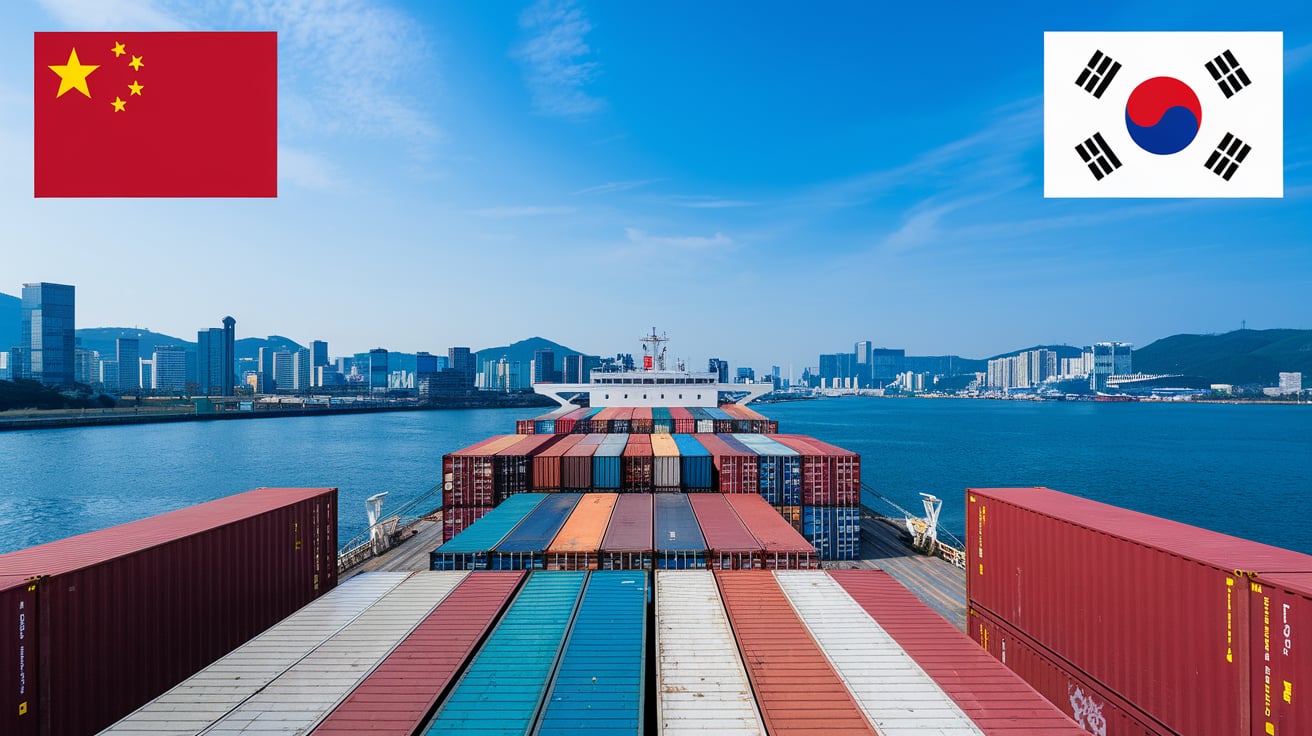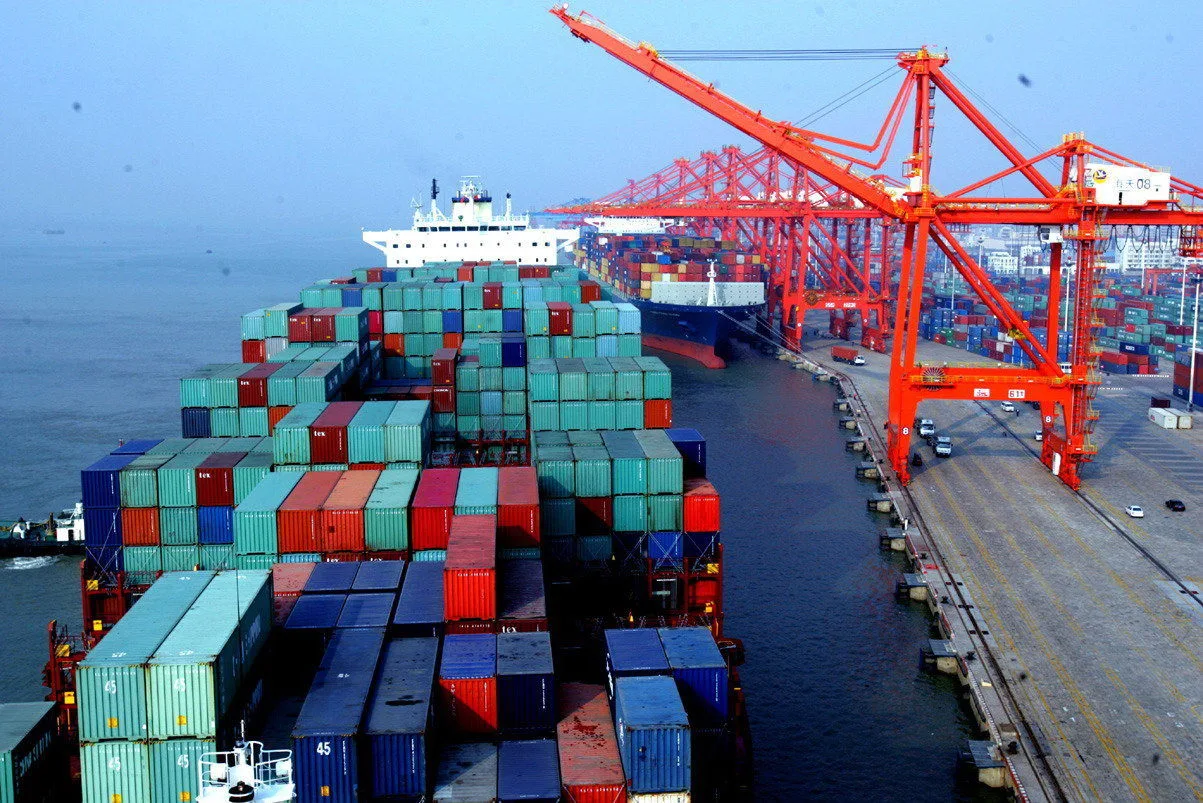Sea freight shipping from China to South Korea is an essential aspect of international trade, offering a cost-effective and reliable solution for transporting goods across this busy trade route. As businesses increasingly look to expand their reach in the global market, understanding the mechanics of sea freight, including its benefits, types of services, and necessary documentation, is crucial for ensuring smooth operations. This comprehensive guide will walk you through the key components of sea freight, empowering you with the knowledge to optimize your shipping process and enhance efficiency in your logistics endeavors. Whether you are a seasoned importer or new to international shipping, this resource will equip you with valuable insights to navigate the sea freight landscape effectively.
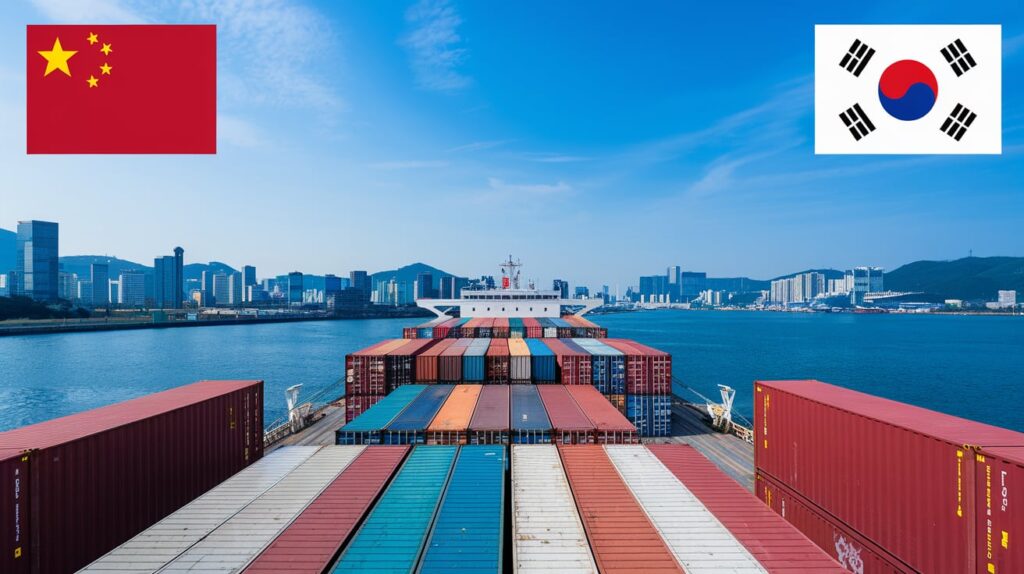
Understanding Sea Freight Shipping From China to South Korea
Sea freight shipping refers to the transportation of goods via ocean vessels, providing a reliable method for moving large quantities of products internationally. This method utilizes various types of cargo ships designed to accommodate containerized goods, bulk items, and specialized cargo. Given the extensive trade routes and port facilities, sea freight is a preferred choice for businesses looking to import or export goods economically over long distances.
Key Components of Sea Freight Shipping:
- Vessels: Cargo ships dedicated to transporting goods between ports.
- Ports: Key locations where vessels load and unload cargo, with notable ports in both China and South Korea.
- Shipping Lines: Companies that operate these vessels, offering a range of services tailored to customer needs.
Benefits of Sea Freight from China to South Korea
Choosing sea freight for shipping from China to South Korea brings several advantages:
-
Cost-Effectiveness: Sea freight is generally more economical compared to air freight, especially for large volumes of goods. Businesses can benefit from lower shipping rates, making it a suitable option for bulk shipments.
-
Capacity and Flexibility: Ocean vessels can carry large quantities of cargo, accommodating a diverse array of products, from machinery to textiles. This flexibility allows businesses to ship various items without needing multiple transport arrangements.
-
Environmentally Friendly: Sea freight is often seen as a more sustainable option, emitting less CO2 per ton of cargo compared to air transport. This reduction in carbon footprint aligns with growing concerns about environmental sustainability.
-
Reliable Transit Times: Shipping schedules are typically reliable, allowing businesses to plan their supply chains effectively. While transit times can vary depending on route and weather conditions, sea freight is often predictable.
-
Safety and Security: Modern cargo ships come equipped with technology designed to protect cargo throughout its journey. Additionally, sea freight benefits from structured protocols to mitigate theft and loss.
Types of Sea Freight Services
When shipping goods via sea freight, there are several types of services to consider:
-
Full Container Load (FCL): This service is ideal for businesses with enough goods to fill an entire shipping container. FCL shipments offer lower rates per unit and decreased risk of damage since the cargo is not mixed with others.
-
Less Than Container Load (LCL): For those with smaller shipments that don’t fill a full container, LCL is an effective option. In this service, multiple shipments are consolidated within a single container, ensuring cost savings.
-
Reefer Shipping: For temperature-sensitive goods, such as food or pharmaceuticals, reefer containers equipped with refrigeration technology are essential. These containers maintain specific temperatures throughout the journey.
-
Breakbulk Shipping: This service is suitable for large or heavy items that cannot be containerized. Breakbulk shipping involves loading cargo individually, making it necessary for specialized handling.
-
Roll-on/Roll-off (RoRo): Designed for vehicles and machinery, RoRo vessels allow cargo to be driven directly onto the ship. This method is efficient for transporting automobiles and heavy equipment.
You may be interested in the following related articles:
- Shipping From China To Vietnam
- Shipping From China To Thailand
- Shipping From China To South Korea
- Shipping From China To Philipines
- Shipping From China To Pakistan
- Shipping From China To Japan
- Shipping From China To Indonesia
- Shipping From China To Singapore
- Shipping From China To Malaysia
Preparing for Your Sea Freight Shipment
Calculating Cargo Volume and Weight
Accurately calculating the cargo volume and weight is crucial for ensuring compliance with shipping regulations and determining transport costs. This process involves measuring the dimensions of your cargo and converting them into cubic meters (CBM) or cubic feet. Additionally, understanding the total weight helps freight forwarders choose the appropriate vessel and service type.
Steps to Calculate Volume and Weight
- Measure dimensions: Measure the length, width, and height of your cargo.
- Calculate volume: Use the formula: Volume (CBM) = (Length × Width × Height) / 1,000,000.
- Determine weight: Weigh the cargo using a scale to ascertain the gross weight.
- Volumetric weight: For shipping costs, compare the gross weight with the volumetric weight (calculated as: (Length × Width × Height) / 5000 for air freight or 6000 for sea freight). The higher value determines shipping costs.
Choosing Between FCL (Full Container Load) and LCL (Less Than Container Load)
Selecting between FCL and LCL depends on the volume and type of goods being shipped:
-
FCL: Recommended for larger shipments, FCL reduces handling times and minimizes the risk of damage since your cargo is the sole occupant of the container. This option is more straightforward in terms of customs clearance and can result in faster transit times.
-
LCL: Suitable for smaller shipments, LCL allows you to share container space with other shipments, thus saving costs. However, this option may involve longer transit times due to consolidation and additional handling processes.
Selecting the Right Container Size
Choosing the appropriate container size is essential for maximizing shipping efficiency:
-
20-foot Container (TEU): Commonly used for smaller shipments, it can accommodate approximately 33 cubic meters of cargo or up to 28,000 kg.
-
40-foot Container (FEU): This larger size is suitable for bulk shipments, providing around 67 cubic meters of capacity or 28,000 kg of weight.
-
High Cube Containers: These offer additional height for cargo, making them ideal for oversized goods or lighter items that require more space.
-
Specialized Containers: Depending on the nature of your products, you may require specialized containers, such as reefer containers for temperature-sensitive goods or flat rack containers for oversized equipment.
By understanding the nuances of sea freight shipping from China to South Korea, businesses can optimize their logistics processes and enhance overall operational efficiency. For tailored solutions and professional assistance, consider partnering with Dantful International Logistics. Learn more about our offerings in door-to-door shipping and customs clearance.
Dantful International Logistics Services:
- Dantful Ocean Freight Services
- Air Freight From China
- Amazon FBA Freight Forwarding
- WAREHOUSE Services
- One-Stop Customs Clearance Solution
- Cargo Insurance Services in China
- DDP Shipping Services By Dantful Logistics
- Out of Gauge Cargo Transportation Shipping Services
Essential Documents for Sea Freight From China to South Korea
When engaging in sea freight shipping from China to South Korea, it’s imperative to ensure that you possess all the necessary documentation. These documents facilitate smooth transportation, compliance with customs regulations, and protection of interests in the transaction. Below is an overview of the essential documents required for successful shipping.
Commercial Invoice
A commercial invoice serves as a critical document that outlines the transaction details between the buyer and seller. It typically includes:
- The seller’s and buyer’s contact information.
- A description of the goods being shipped.
- The quantity and unit price of each item.
- The total value of the shipment.
- Payment terms.
This document is vital for customs purposes, and it establishes the value of the goods for duty assessment.
Packing List
The packing list complements the commercial invoice by detailing the specific contents of each shipment. It typically includes:
- The itemized list of goods.
- The dimensions and weight of each package.
- Special handling instructions, if applicable.
Customs officials utilize the packing list to verify the cargo against the commercial invoice, ensuring that all items are accounted for and properly categorized.
Bill of Lading
The bill of lading (BOL) is a key document issued by the shipping carrier that serves multiple purposes:
- It acts as a receipt, confirming the carrier has received the cargo.
- It serves as a contract between the shipper and the carrier for the transportation of goods.
- It can function as a title, meaning it’s transferable to others, allowing for the transfer of ownership.
The BOL must be accurately filled out and retained until the cargo reaches its destination.
Certificate of Origin
A certificate of origin is a document that verifies the country in which the goods were manufactured. This document may be required by customs for tariff purposes and can be critical for certain products that face import restrictions or quotas. The certificate typically includes:
- Identification of the exporter and importer.
- Description of the goods.
- Confirmation of the goods’ origin.
Customs Declaration Forms
Customs declaration forms are essential for both export from China and import into South Korea. These forms provide a detailed account of the shipment and include:
- Information about the consignor and consignee.
- Description and value of the goods.
- Any relevant tariff codes.
Completing these forms accurately is crucial to avoid delays in customs clearance and potential fines.
The Sea Freight Shipping Process Step-by-Step
Navigating the sea freight shipping process involves several key steps. Understanding each phase can help ensure a seamless transition from the point of origin in China to the destination in South Korea.
1. Obtaining a Freight Quote and Booking
Providing Shipment Details to the Freight Forwarder
The initial step entails providing comprehensive shipment details to your freight forwarder. This includes:
- Type of goods being shipped.
- Weight and dimensions of the cargo.
- The desired shipping timeline.
Agreeing on Shipping Terms and Rates
Once the freight forwarder has the necessary information, they will provide a quote. It is important to negotiate the terms, including delivery timeframes and total costs.
Confirming the Booking
Upon agreement, confirm the booking with the freight forwarder, ensuring all pertinent details are documented, including the Bill of Lading.
2. Cargo Pick-Up and Delivery to the Port
Arranging for Cargo Pick-Up from the Supplier
Coordinate with your supplier to arrange for cargo pick-up. This may involve setting a specific time for collection.
Transporting the Goods to the Port of Departure in China
After pick-up, the cargo must be transported to the designated port of departure in China. Proper scheduling is essential to avoid delays.
3. Export Customs Clearance in China
Submitting Required Documents
Once at the port, the freight forwarder will submit the necessary documents, including the commercial invoice and customs declaration.
Paying Export Duties and Taxes
Depending on the nature of the goods, export duties may apply, which must be paid before the cargo can be loaded onto the vessel.
4. Loading and Ocean Transportation
Loading the Cargo onto the Vessel
After customs clearance, the cargo is loaded onto the ocean vessel. Proper handling during this phase ensures that the goods remain intact.
Transit Time from China to South Korea
The transit time for sea freight shipping between China and South Korea typically ranges from 1 to 3 days, depending on the departure and arrival ports, as well as the shipping route used.
5. Import Customs Clearance in South Korea
Submitting Import Documents
Upon arrival, the freight forwarder will handle the submission of import documents, including the Bill of Lading and Certificate of Origin, to South Korean customs.
Paying Import Duties and Taxes
Similar to the export phase, import duties must be paid based on the value and nature of the goods.
6. Cargo Unloading and Delivery to the Final Destination
Unloading the Cargo at the Port of Arrival in South Korea
Once customs clearance is completed, the cargo is unloaded from the vessel at the port of arrival.
Arranging for Final Delivery to Your Warehouse or Facility
The final step involves coordinating the delivery from the port to the designated warehouse or facility. This may require local transport services to facilitate the transfer.
Challenges of Sea Freight
While sea freight offers numerous advantages, there are challenges that importers must be aware of.
Longer Transit Times: Planning for Delays
Sea freight typically involves longer transit times compared to air freight. Delays can arise from various factors, including port congestion and unexpected weather conditions. Effective planning and timely communication with the freight forwarder are essential in managing these delays.
Weather-Related Risks: Ensuring Cargo Safety
Weather conditions can significantly impact shipping schedules and cargo safety. Shippers must stay informed about weather patterns and potential disruptions along the shipping route to minimize the risks associated with adverse weather.
Tips for a Smooth Sea Freight Experience
To ensure a successful sea freight experience, consider the following tips:
Choosing a Reliable Freight Forwarder
Selecting a reputable freight forwarder can make a significant difference in the efficiency of the shipping process. Look for a forwarder with extensive experience in handling shipments from China to South Korea, as well as positive customer reviews.
Packing and Labeling Your Cargo Properly
Proper packing and labeling are crucial to preventing damage during transit. Ensure that your cargo is securely packed according to international shipping standards and that labels are accurate and legible.
Tracking Your Shipment During Transit
Utilize tracking systems provided by your freight forwarder to stay updated on your shipment’s status. Real-time tracking enables you to monitor progress and address any potential issues promptly.
Preparing for Potential Delays or Unexpected Events
Plan for potential delays or unforeseen circumstances by building flexibility into your shipping timeline. Having contingency plans in place can alleviate stress and ensure that your operations continue smoothly.
By carefully managing these aspects of the shipping process, businesses can enhance their efficiency and minimize challenges associated with sea freight from China to South Korea. For professional support in navigating the complexities of international logistics, consider Dantful International Logistics, a provider renowned for its comprehensive range of services tailored to your shipping needs. Explore Dantful’s customs clearance and warehouse services to streamline your logistics operations.

Young Chiu is a seasoned logistics expert with over 15 years of experience in international freight forwarding and supply chain management. As CEO of Dantful International Logistics, Young is dedicated to providing valuable insights and practical advice to businesses navigating the complexities of global shipping.
The other language versions of this article
- دليل خطوة بخطوة للشحن البحري من الصين إلى كوريا الجنوبية
- Stap-voor-stap handleiding voor zeevracht van China naar Zuid-Korea
- Guide étape par étape du fret maritime de la Chine vers la Corée du Sud
- Schritt-für-Schritt-Anleitung für Seefracht von China nach Südkorea
- Guida passo passo al trasporto marittimo dalla Cina alla Corea del Sud
- Guía paso a paso para el transporte marítimo de China a Corea del Sur
- Guia passo a passo para frete marítimo da China para a Coreia do Sul
- Пошаговое руководство по морским грузоперевозкам из Китая в Южную Корею
- Çin’den Güney Kore’ye Deniz Taşımacılığına Adım Adım Kılavuz


